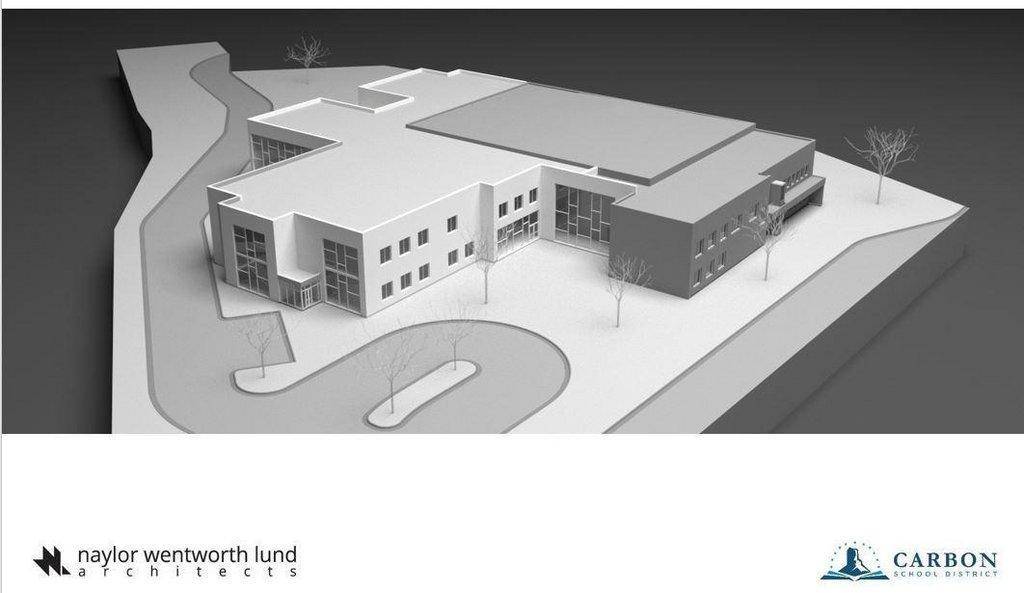Carbon School District Press Release
Last year, the Carbon School Board floated a bond and the public voted to approve it to upgrade Helper Middle School and to do an addition and remodel to Carbon High School. At that time, it appeared that things were pretty set in terms of the changes that would be made to the buildings.
While the Carbon High construction is coming along nicely as bids come in favorably, the board has decided to go in a different direction with the Helper campus. It is a direction that everyone has agreed is better than what was going to happen initially, and it will also stay within budget.
“When we originally approached the board about doing something about Helper Middle School, the conversation moved to remodeling the building to provide structural upgrades to improve the safety of the structure,” said Carbon School District Superintendent Lance Hatch. “The costs for making the building seismically sound, improve bus and ADA accessibility, upgrade the mechanical and electrical systems, and make other improvements inspired the school board to dedicate $10 million from the bond to Helper Middle School.”
The school, which opened in the late 1930s, needed a lot of work, even with an energy remodel that was done in 2005. The building also has an addition, including a few classrooms and a gymnasium that was added on in the 1950s. But as the present construction company, engineering firm and architect got into reviewing the oldest part of the school, they found some problems that had not been anticipated
“Some of the joists that were installed initially were found to be not of one piece, but they were spliced in the middle, making the seismic problems even greater and more expensive to fix,” said Hatch. “In addition, the whole building needs to have fire suppression sprinklers put in. In some locations, the sprinklers will have to be doubled because there is an old ceiling and a new ceiling far enough apart that they will both need sprinklers or the old ceiling will need to be pulled out, adding to the cost of the project.”
The problem was not only the cost, but a complicated rotation of having students still be in the building during the construction with the initial upgrade. Now, with the new complications and how much would need to be done, that rotation would become disruptive to student learning.
“The construction manager and the architect said they were going to have to touch everything in that building to get this done. From what they showed us, the invasive nature of the structural upgrade would cause more replacement and remodel work than was originally estimated,” said Hatch. “The architect and construction manager said it was getting to a point that the costs were adding up to what it would cost to construct a new facility that could replace the majority of the old building and the expenditures would be approximately the same.”
Hatch said that if during such a project they could still hold school while they were constructing the new addition, keep the facility on its present site, and the cost would be the same, the district might be able to consider it.
“I actually expected them to say that there was not enough room on the site to do that,” explained Hatch. “But they didn’t. Instead they said ‘We think we could probably do that.’”
Consequently, at the Carbon School District Board of Education meeting on July 18, they approached the board with their ideas. Then, during the work session at the Aug. 12 meeting, the architect presented a new, fairly detailed plan, one which would still keep the kids in the old building while creating a new classroom/cafeteria building on the site where the school stands now. The present gymnasium and classrooms that were added on over 60 years ago would remain, but be remodeled.
When the initial ideas for the building remodel were put forth last year, it was thought that it would extend the life of the building by 15-20 years. With the new plan, the building will be viable for 50 to 75 years, yet it will cost the same amount of money.
“The architects did an enormous amount of work and they put the plan on overdrive so that they could bring us information that was complete,” explained Hatch.
Hatch also said that while the COVID 19 pandemic has been a blow to everyone, it has also created a situation where the costs for doing work on both the middle school and the high school will be bargains.
“There were a number of school districts in the state that tried to float bonds last year and we were only one of only two in which the public voted to allow that,” said Hatch. “No one is going to try to float a bond during the election this year because of the political environment and the pandemic going on. These construction companies, all of which specialize in building schools, are looking for work. As the bids have come in for the work at Carbon High, we have seen how competitive they are, and much of what we are seeing is below what we estimated it would cost. Bottom line is our money is going to go a lot further than we thought it would originally.”
Hatch pointed out that at Carbon High the remodel and addition is moving forward just as was promised to the public when the bond was proposed. These changes with the plans for Helper will in no way affect Carbon’s project.
“Everything we said we were going to do is going to be done. No project is going to be shorted by making these changes to the Helper Middle School project. In fact, because of the low costs right now, we are going to be able to do more at both sites than we originally thought we might,” he concluded.

